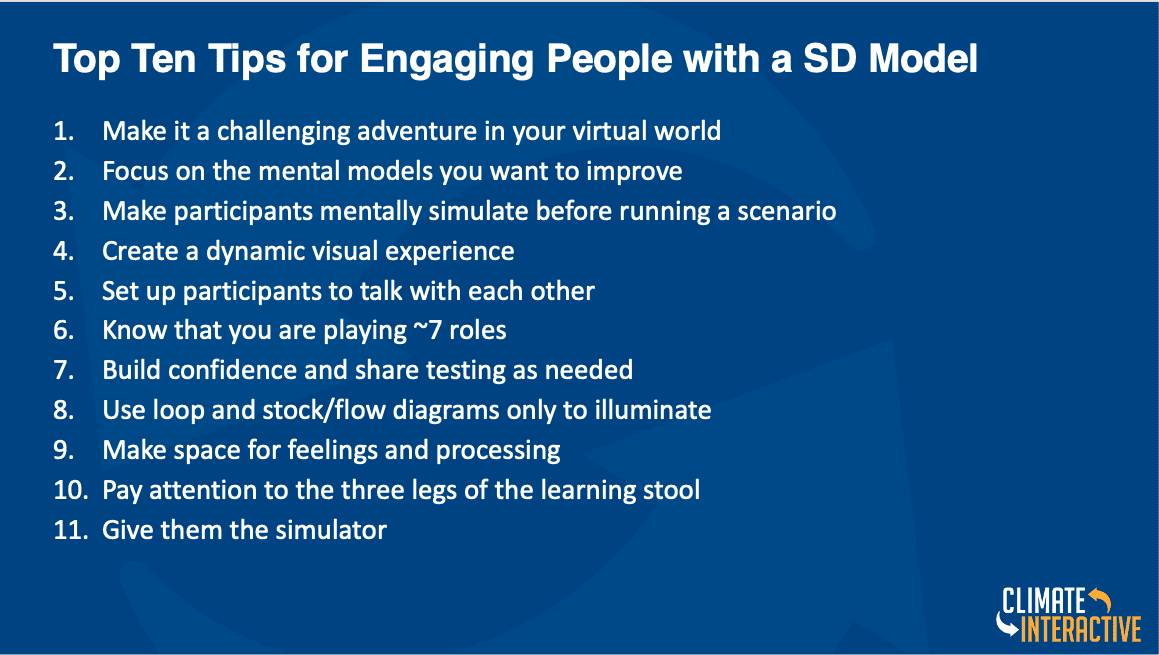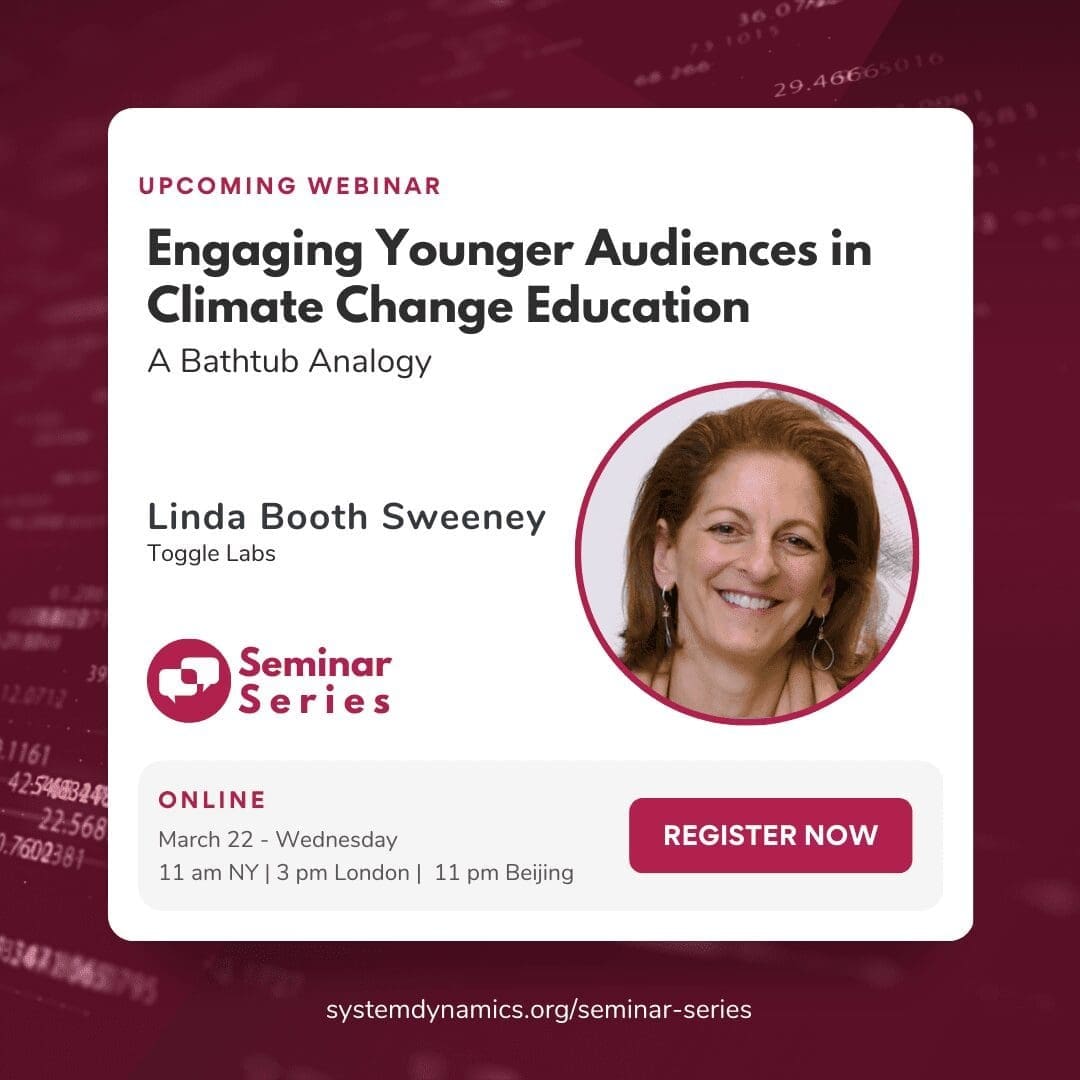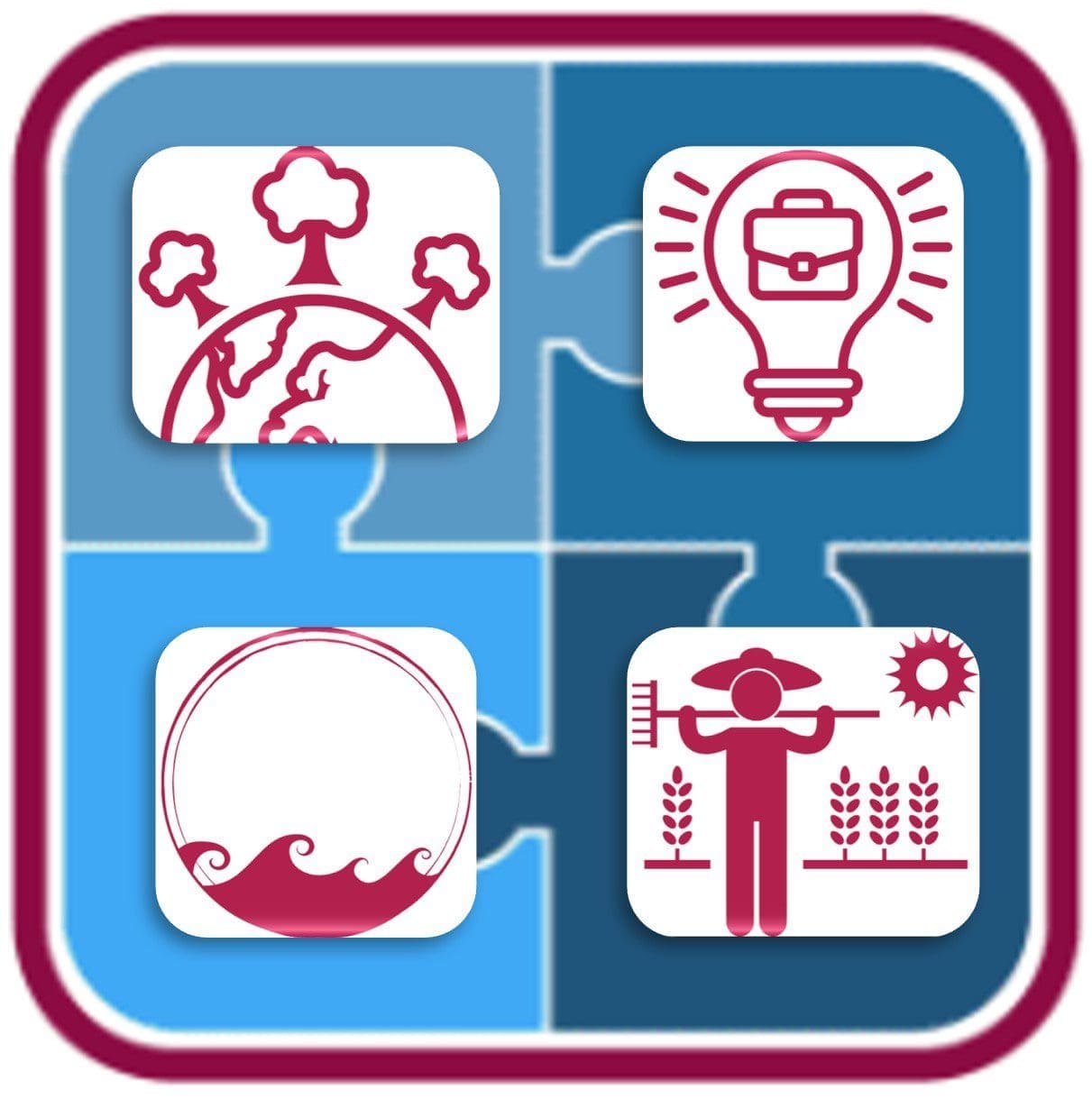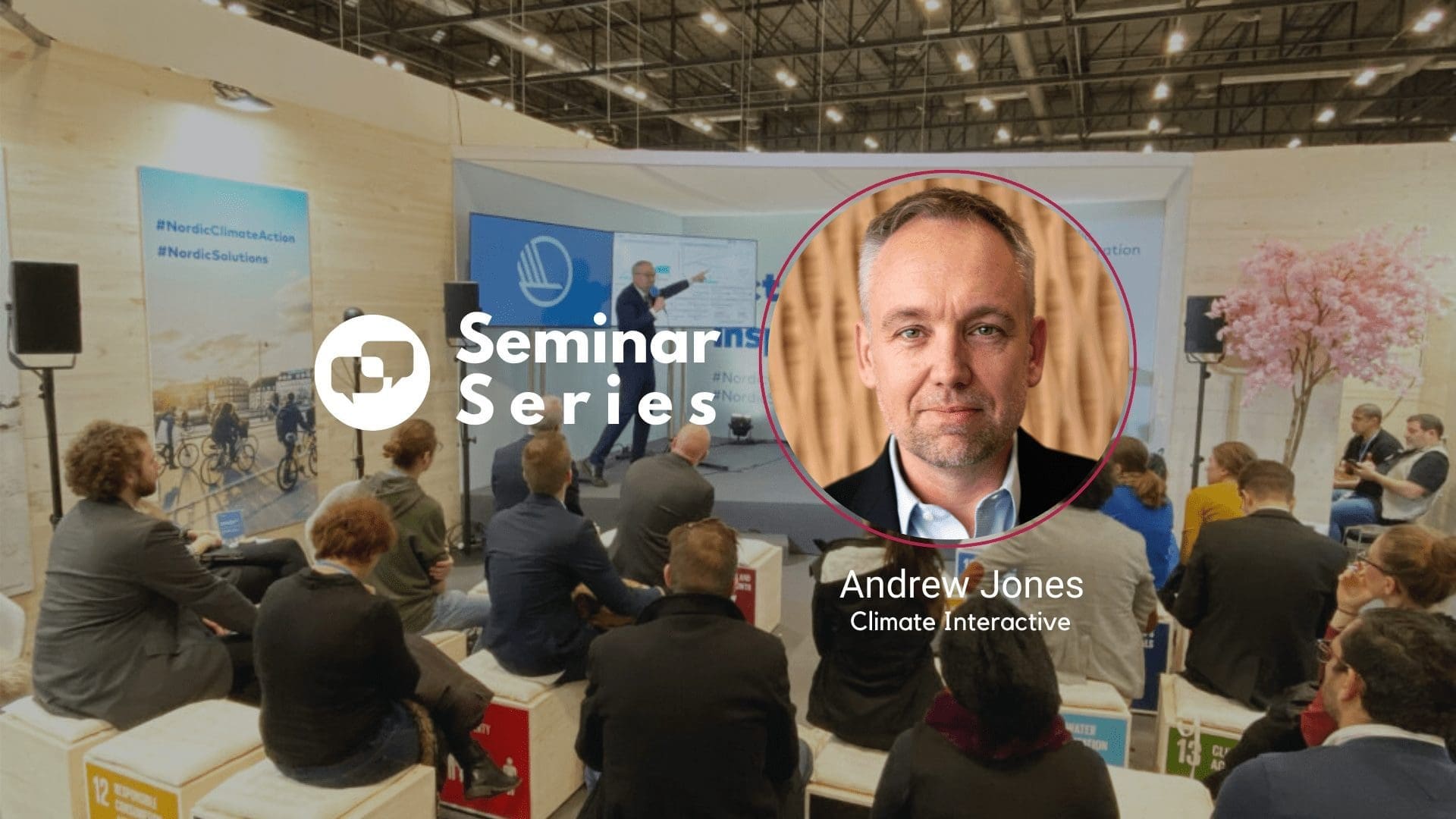Dynamic Business Models for Strategic Management Accounting
Feb, 28 at 11 am NY | 4 pm London | 12 am Beijing | Time Converter
This seminar is part of our special series System Dynamics for Business Innovation with Kim Warren. A series of nine webinars offering a deep dive into the application of System dynamics in Business. The sessions will explore strategic modeling techniques and their transformative impact across different business domains, from strategic management to IT systems planning and environmental impact. This series will reveal the potential of System Dynamics as a powerful tool for business innovation and complex decision-making.
Session 2
Dynamic Business Models for Strategic Management Accounting
Overview
This session explains the aims of strategic management accounting (SMA) – giving senior leaders insight about how a business develops and performs, beyond just the financials – and the challenges faced by those trying to do so. This seminar will explain that strategic management covers many more responsibilities than simply building the business plan. It will show that Dynamic Business Models can very largely fulfill those needs, in an efficient, reliable and transparent manner. DBMs provide exactly the joined-up view of a business and financials that leaders say they want. (The session is supported by two substantial practitioner articles)
Learning Outcomes
- Understand the aims of strategic management accounting.
- See how DBMs transform the contribution that SMA can offer.
- Learn to integrate dynamic modeling of a business system’s behaviour with the financial outcomes it generates.
Target Audience
- Accountants seeking to upgrade their contribution to organizations’ strategic performance.
- Business strategists and consultants needing to demonstrate both strong business development and financial performance.
- Academic professionals and students in business, accounting, and finance.
- Business professionals wanting to integrate their strategic management efforts and financial outcomes.
This session is designed to provide practical skills and theoretical knowledge, making it valuable for professionals aiming to leverage dynamic modeling in strategic management accounting.
Certificate of Attendance
About the Presenter
Kim Warren is an accomplished strategist with a wealth of experience in the business world. He spent 10 years in senior strategy roles, including as Retail Strategy Director at Whitbread PLC. Warren then transitioned to academia, teaching Strategic Management at London Business School for two decades. During his tenure, he developed a keen interest in System Dynamics, finding traditional strategy tools insufficient for modern business challenges. This led him to embrace and adapt System Dynamics, creating the Strategy Dynamics method. Warren’s method focuses on designing and managing business systems dynamically to adapt to changing markets and internal business conditions. He has authored influential books on the subject, including “Competitive Strategy Dynamics” and “Strategic Management Dynamics,” and has been recognized with the prestigious Jay Wright Forrester Award from the International System Dynamics Society, where he also served as president in 2013. Warren, along with his partner Christina Spencer, has developed a range of learning materials and courses to disseminate the Strategy Dynamics method, utilizing the Silico online modeling app to support this approach.
For more detailed information, you can visit his website here.
Up Next
How Did En-ROADS Get 755,000 users? Lessons on Modeling, Interface Design, and Facilitation
May, 8 at 11 am NY | 4 pm London | 11 pm Beijing | Time Converter
How Did En-ROADS Get 755,000 Users? Lessons on Modeling, Interface Design, and Facilitation
In this participatory webinar, Drew Jones of Climate Interactive will share insights on how to create a System Dynamics model and online simulator that will succeed at improving mental models and system performance at scale. The teams at Climate Interactive, MIT Sloan, and Ventana Systems designed its System Dynamics models C-ROADS and En-ROADS with the goal of improving the understanding of climate policy choices amongst decision-makers around the world, leading to deliberate strategies in three major areas: 1) modeling, 2) interface/UX design, and 3) facilitation, workshop design, game creation, training, and user support. This webinar will cover the design decisions made over the ~30 years of the project, generalizing the more universal insights for any system dynamics project.
About the Presenter
Andrew (Drew) Jones is Co-Founder and Co-Director of Climate Interactive. An expert on international climate and energy issues, his quotes and data stories appear in the New York Times, The Washington Post, and other media. Jones and his team at CI and MIT Sloan developed the climate simulations used by John Kerry and others to secure the 2014 bi-lateral U.S.-China deal that set up the Paris Agreement, as well as currently in the White House and Congress. Trained in System Dynamics modeling at Dartmouth College and MIT, Jones has worked at Rocky Mountain Institute and was a protégé of Dana Meadows. Jones co-accepted the System Dynamics Society’s award for the best real-world application of modeling. He won Dartmouth College’s Ray W. Smith award for the most significant contribution to the status of the College.
Special Guests
John D. Sterman is the Jay W. Forrester Professor of Management at the MIT Sloan School of Management and Director of MIT’s System Dynamics Group. He is the author of many scholarly and popular articles on the challenges and opportunities facing organizations today, including the book Modeling for Organizational Learning, and the award-winning textbook Business Dynamics. Prof. Sterman’s research centers on improving decision making in complex systems, focusing on environmental sustainability, climate change, alternative fuel vehicles and process improvement in organizations. He pioneered the development of “management flight simulators” of corporate and economic systems, many of which, including the C-ROADS interactive climate policy simulation he helped developed, are used around the world by governments, businesses, universities and the public. Among his honors, Sterman is the recipient of an honorary doctorate, has twice been awarded the Jay W. Forrester Prize for the best published work in system dynamics, received the best application award from the System Dynamics Society, was named one of MIT Sloan’s “Outstanding Faculty” by the BusinessWeek Guide to the Best Business Schools, and has received seven awards for teaching excellence from the students at MIT.
Florian Kapmeier is Professor of Strategy at ESB Business School at Reutlingen University, Germany. He received his doctorate from the University of Stuttgart on “Interorganizational Learning in Learning Alliances”. He has strengthened his academic profile with research visits at MIT Sloan School of Management (Cambridge, USA), McGill University (Montréal, Canada), University of Lugano (Switzerland), and Emlyon Business School (Lyon, France). For his research and teaching activities, he links the System Dynamics methodology with empirical research on theory development and testing, focusing on organizational aspects of the understanding of complexity, increasingly addressing environmental sustainability issues. He works closely with the Climate Interactive to raise awareness of the consequences of climate change, using the suite of Climate Interactive’s simulation models. Florian has collaborated closely with Climate Interactive to develop the En-ROADS Climate Workshop, the Climate Action Simulation Game, and resources for the World Climate Simulation. In addition, he has helped translate both event materials and website resources for the World Climate Simulation. Florian has facilitated numerous En-ROADS and World Climate events with groups between 12-60+ people since 2014, from high-school and university students to corporate and political policy makers.
Environmental and Natural Resource Group Meeting
A Monthly Meeting for Reviewing and Discussing System Thinking and Systems Dynamics presentations from Students and Practitioners on the topics of Energy, Water, Land Use (Agriculture & Food), and the Environment.
For the Month of April this meeting will be held at 7pm Eastern Time to better serve the Asian Community
Justin Connolly from www.deliberate.co.nz
“An Overview on En-Roads and a Discussion on its Ability to Move People to Act”
Submit a proposed presentation at https://airtable.com/shrXcSAqAeOo6MiMbContact
Joseph M. Londa
SDS Environmental SIG Leader
environment@systemdynamics.org
Engaging Younger Audiences in Climate Change Education
11 am NY | 4 pm London | 12 am Beijing | Time Converter
Engaging Younger Audiences in Climate Change Education. A Bathtub Analogy.
Join us for an interactive session with Dr. Linda Booth Sweeney, a systems educator and author, as she shares innovative ways to educate children about climate change. With a recent poll indicating that 84% of parents believe children should learn about climate change, but only 45% have talked to their kids about it, this session is an opportunity to provide age-appropriate and impactful learning experiences.
While adults need age-appropriate ways to talk with children about climate change, children need opportunities to play, experiment and interact with meaningful content to learn and retain ideas. They also need analogies that “ stick” and provide them with a sense of agency.
In this session, you will learn how to use the analogy of a bathtub to help children understand the complexities of climate change and inspire action. You will explore the following learning outcomes:
- Understanding the basics of climate change dynamics through the THINK LIKE A BATHTUB video created for COP26 United Nations Climate Change Conference in Glasgow.
- Engaging students with an interactive, augmented reality THINK LIKE A BATHTUB app designed as a hands-on educational tool to demonstrate their understanding.
- Experimenting with experiential games from Linda’s book, The Climate Change Playbook.
- Accessing climate bathtub-related resources and journal articles to further educate yourself and your students.
Don’t miss out on this opportunity to enhance your skills and make a positive impact on future generations.
About the Speaker
Linda Booth Sweeney is a learning expert who specializes in complex systems. In her Systems Leadership Labs, Linda works to give leaders space to think differently, and to experiment with language, visuals, tools, and knowledge architecture that better mirrors the complexity they are navigating. Linda co-founded Toggle Labs, a metaverse education studio, in 2018 to offer people of all ages immersive, learn/do opportunities to work with complex systems and co-create healthier futures. She is co-author of The Systems Thinking Playbook, The Climate Change Playbook, and numerous other books and journal articles. Linda also has a passion for writing children’s books. Her next book, Apart Together, is a child’s first book of system thinking and will be published by Balzer & Bray in September 2023. For more on Linda’s work, see on systems visit lindaboothsweeney.net, and lindaboothsweeney.com for her work on children’s education.
Environmental and Natural Resource Group Meeting
A Monthly Meeting for Reviewing and Discussing System Thinking and Systems Dynamics presentations from Students and Practitioners on the topics of Energy, Water, Land Use (Agriculture & Food), and the Environment.
Topics to be added in advance of the meeting or submit a proposed presentation
https://airtable.com/shrXcSAqAeOo6MiMb
Contact – Joseph M. Londa
SDS Environmental SIG Leader
environment@systemdynamics.org
CLIMATE CAFE – CLIMATE FEEDBACK LOOPS
Fossil fuel emissions from human activity are driving up Earth’s temperature—yet something else is at work. The warming has set in motion nature’s own feedback loops which are raising temperatures even higher. The urgent question is: Are we approaching a point of no return, leading to an uninhabitable Earth, or do we have the vision and will to slow, halt, and reverse them?
Join them as former PBS producer Melanie Wallace and freelance filmmaker Bonnie Waltch discuss their series of five short films focused on climate feedback loops. Narrated by Richard Gere, the programs explain in detail how environmental feedback loops work and why they’re important to understand if we are to successfully address the warming of our planet. Bonnie & Melanie’s mission is to offer teachers around the world these educational films and supporting materials for free.
Top 10 Tips to Engage People with a System Dynamics Model
Top 10 Tips to Engage People with a System Dynamics Model
Andrew P. Jones is Co-Founder and Co-Director of Climate Interactive and a Research Affiliate at MIT Sloan. Andrew is an expert on climate change and energy issues, a prominent System Dynamics modeler, and a keynote speaker.
In his webinar with System Dynamics Society, Jones presented his 10+1 tips to engage people with a System Dynamics model. Here’s a summary of the tips, but you can watch the recording below for all details!
All Seminar Series are free for members of the Society. Join us today and unlock all benefits!

1. Make it a challenging adventure on their terms in your virtual world
Make your model playful to entice curiosity about what it tests. This is a virtual world where people will experience something new. The challenging adventure or game is what we do mostly with the interface of the model. If you open the En-ROADS interface, you will see two main graphs, the main output, and several sliders. When playing with the sliders, your changes will be reflected in the graphs. Avoid telling people: “I’m going to show you how to do this”, instead, try saying: “On your terms, you’re going to have to figure out how to get that graph down to your target line”
“We do NOT model systems. We model problems.
2. Focus on mental models you want to improve
We do NOT model systems. We model problems. In System Dynamics, we define a problem as a behavior over time, a reference mode that we’re curious about why does it behave like that. We’re so curious about the problem that we develop a simulation to understand it. We build interfaces to improve the mental models of the stakeholders or clients. System Dynamics modelers know that mostly the mental models of decision-makers don’t match with the real world and how the actual system behaves. We don’t build interfaces to give access to policy levers in the system, but we are trying to leverage the necessary mental model improvements.
3. Make participants mentally simulate before running a scenario
If people don’t have a theory, they don’t notice the mental model they use to forecast what’s going to happen. Then they don’t get to learn and improve their understanding. Therefore, you must encourage people to anticipate, based on their own theories, what’s going to happen when running a scenario. No theory, no learning.” (Edward Deming)
“Tell people what to look at, let them guess what they are going to see, and then make it exciting like a movie”
4. Create a dynamic visual experience
Humans like to see change and it is important to employ this fact to get people to run and look at your graphs without losing their focus. Make people think and anticipate and then direct their eyes to what you want them to notice. If you do this well, you don’t even need to draw a Causal Loop Diagram because they are drawing it in their heads. Tell people what to look at, let them guess what they are going to see, and then make it exciting like a movie.
5. Set up participants to talk with each other
People learn socially and with hot-button issues like climate change, they need to know that their friends are not going to hate them if they change their minds. You need people to be processing the information collectively and socially with others. When presenting your model, stop frequently and advise: “Turn to the person next to you and discuss what you think of that conclusion”.
“Keep the discussion on improving system performance not on the tool you’re using”
6. Know along the way that you are playing at least seven roles
Try to present your model with the help of, at least, another person. Ideally, you need someone to facilitate the discussion while another runs the model. As a facilitator, you will be playing four roles including:
Coach – Helping participants to extract insights out of the model.
Professor – Teaching the audience theories and sharing factual information
Playwright – Creating an emotional journey of ups and downs.
Fellow Traveler – Being authentic, vulnerable, and just another person trying to solve a complex problem. If it is worth making a model about, it’s very important. If it is very important, you must deeply care about it.
You want the conversation to be around how to solve a complex problem together and what your audience is going to do about it. Keep the discussion on improving system performance not on “oh that’s a cool model how did you make that”. That’s all side information.
You want to minimize your roles in:
Tech – you must keep the conversation on improving the system performance, not the way or tool you have used to develop the model or create the graphs
Advocate – when people disagree with you, your job is not to fight them or disagree with them back, but to set up others to find the voice of your work.
Defender – Don’t get involved in the fight of “YOU HAVE A BAD MODEL!”. Avoid this fight as much as you can.
Read the article “Teamwork in Group Model Building” on the System Dynamics Review for more insights on strategies for efficient and effective model building in groups.
7. Build confidence and share testing as needed
You can share your tests and comparisons to other models and/or predictions to build stronger confidence. For instance, Climate Interactive and MIT Sloan built the En-ROADS with the best science available, using the data sources such as the Intergovernmental Panel on Climate Change (IPCC) and International Energy Agency. All the assumptions are available open-source in the 400-page reference guide. Many of the assumptions that someone might not believe in are changeable within the model. Several models do not have good literature of other scenarios to compare against, while En-ROADS can be compared with six integrated assessment models to build confidence.
8. Use loops and stock/flow diagrams only to illuminate
As you help people improve their intuition, sometimes you need to use loops and stock/flow diagrams, especially if you are presenting to a more technical audience but always connect it to the simulator. Avoid showing this to policymakers, they are usually not interested in the loops, instead, tell a story about reinforcing or balancing feedback.
9. Make space for feelings and processing
Deliver your presentation with excitement and intensity, but you need to slam on the brakes and let participants compromise with their feelings and do the necessary processing. You may create a scenario of success, and they get to create their vision, something that they would love to see. And it’s time to slam on the brakes and may invite them to 60 seconds of silence. Yes! It is weird but imagine 60 seconds of silence of people sitting with a scenario of success.
“Create the conditions where people are open to changing their minds”
10. Pay attention to three legs of the learning stool
Reflective Conversation – Create the conditions where people are open to changing their minds, surfacing and testing assumptions, and talking to their peers about improving their assumptions. You’ve got to make the space where people are open to being wrong and thinking differently.
Vision – Help people see a future that they fall in love with they just want it so badly that they see the gap between the vision they want and the reality that they feel and experience that tension in between. Orient towards what one genuinely cares about.
Systems Thinking – Explaining how a complex system works where time, cause, and effect are distant in time and space can be difficult, especially when you include stocks, flows, feedback loops, and other inner relationships. You can learn how to facilitate a training that uses systems thinking and System Dynamics for free with Climate Interactive learning resources
10 + 1. Give them the simulator
People need your help as a facilitator, but you must give them something to play with that naturally gives them the mental model improvements that you want and guides them towards committing themselves to action to improve system performance. As Buckminster Fuller states “If you want to teach people a new way of thinking, don’t bother trying to teach them. Instead, give them a tool, the use of which will lead to new ways of thinking.”
Watch the recording below
Recent Posts
Call for Presenters: Seminar Series
Call for Presenters: Seminar Series We at the System Dynamics Society are continually seeking vibrant and knowledgeable presenters for our ongoing Seminar Series. As we unfold the calendar, there’s always a place for more insights, experiences, and expertise to enrich...
Honoring Excellence: A Glimpse into the Awards of the International System Dynamics Conference
Honoring Excellence: A Glimpse into the Awards of the International System Dynamics Conference The International System Dynamics Conference brings together experts, practitioners, and students to exchange ideas, showcase real-world applications, and celebrate...
From Bergen to Global: UiB’s System Dynamics Group
From Bergen to Global: UiB’s System Dynamics Group The System Dynamics Group, an autonomous research group at the University of Bergen (UiB) was established in 1971 by professor emeritus Svein Nordbotten. Inspired by the work of Jay W. Forrester, Nordbotten...
Upcoming Events

MIT System Dynamics Seminar | Economic Complexity, Diversification and Green Supply Chains
Please visit the MIT System Dynamics Seminars page for more information. You are invited to attend the System Dynamics Seminar being held on Friday, April 19th from 12:30-2:00pm EST in the Jay W. Forrester conference room, E62-450, or via...
Recent Business cases
A Design Value Calculator: A System Dynamics Boardgame
A Design Value Calculator: A System Dynamics Boardgame EXECUTIVE Summary Product design is a specific form of complex innovation that touches all areas of an organization’s management. While entrepreneurs recognise the value of design, they often tend to focus...
The World Bank Uses System Dynamics to Identify Root Causes of Poverty
The World Bank Uses System Dynamics to Identify Root Causes of Poverty EXECUTIVE Summary Madagascar has one of the highest poverty rates in the world. In 2022, an astonishingly three out of every four people in Madagascar lived below the poverty line. Poverty has...
Fast-Track Cities Uses System Dynamics to Enhance HIV Care
Fast-Track Cities Uses System Dynamics to Enhance HIV Care EXECUTIVE Summary Low levels of viral suppression at 69% for people with HIV make it hard to believe the 95% target level will be achieved by 2030 in St. Louis, USA. As a solution, Fast-Track Cities-STL opted...








